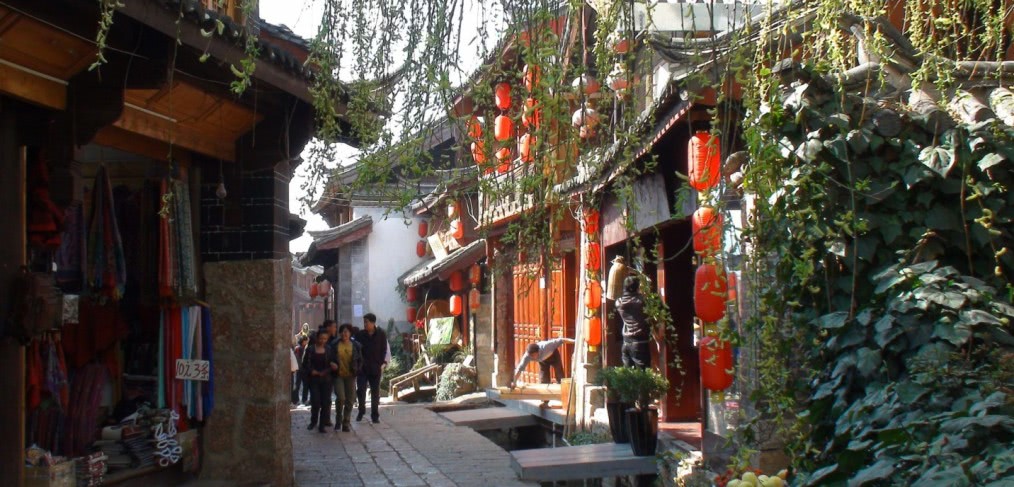
Who will save China’s cities? (Part 3)
In Chinese cities these days, you would be hard-pressed to find urban enclaves that express how people in China once lived. If you walk the streets, particularly in areas that developed quickly, you’ll find the cities as a whole are soulless. This is largely because our new districts or cities started with huge over-engineered roads and were followed by massive gated communities and super blocks that prevented any humanizing qualities to the streets and public spaces. I have already addressed how the blight of urban highways is largely to blame for this problem, yet people in Beijing continue to build these super blocks. The Beijinese call them “Big Yard“, but why do they choose to live this way?
To answer this question, I did a little experiment. I selected some typical and established neighborhoods in Beijing to explore, but to get into a Big Yard community, I had to go under lock and key. Every development I chose was gated and protected by security guards in military uniforms.
[pullquote]“Our new cities started with huge over-engineered roads, followed by massive gated communities and super blocks that prevented any humanizing qualities.”[/pullquote]
Once through the gate, I was surprised by what I found inside: narrow streets with lovely green canopies, elderly people out for walks, children and puppies playing, cars driving slowly with care. There were mixed uses—offices at the gateway followed by residential apartments, schools and kindergartens. Here it was, everything I wanted a Chinese city to be. Yet it was cut off from the rest of the city by layers of so-called security.
It’s a face of Beijing and other Chinese cities that the public doesn’t see unless they have connections to a particular community. Cities in other countries have gated communities as well, but none so large in the city centre as in Beijing. These communities represent ten to twenty blocks of New York or London. Within the urban grid of Beijing, that’s like knocking enormous holes out of the center and cutting capillary from artery, not only causing traffic congestion on the main road, but also forcing visitors and locals back into their cars to navigate their way around these massive developments.
A government’s department, for example, has its own offices, restaurants, housing, schools and parks all within a single gated community. When families and businesses grow, the development simply expands and takes with it a larger piece of the public city outside the walls. It might look completely unnecessary from the point of view of modern planning theory—why do you want to lock housing and an office together? What’s point of hiding a commercial office behind rows of apartments?—but the Beijinese have always done it this way.
The irony of the gates is that they aren’t protecting assets; many of these communities are not high-end enough to warrant the multiple layers of fences and gates. These gates have proven not be able to effectively stop crimes: statistics shows that more thefts have happened as more gated communities have been built. The gates are more of an ideological symbol than a real security measure.
In the course of my experiment, a single question occurred to me again and again: Why has China’s economy been restructured so quickly but the spatial structure of our cities is still in Mao’s style? Why have the Chinese not challenged the false planning system? Technically, the knowledge and skill of good planning and urban design can’t be more difficult than that of finance or any other modern science.
[pullquote]“We Chinese have been building walls for far longer than we have been opening gates.”[/pullquote]
For a very long time I couldn’t answer this question. It is easy to say there should be a radical reform to our planning system, but I couldn’t figure out where to start. Then I looked to our past. Chinese cities are growing the way they always have; it’s just that now our Forbidden Cities are occurring on a much larger scale. Feudalism has been practiced in China for more than 2,000 years, while capitalism has only been around for 20. We Chinese have been building walls for far longer than we have been opening gates. Great walls, forbidden cities…you name it. It’s how we’ve been protecting the common interest for centuries. This deeply rooted social psychology is still quietly shaping the way we manage our communities in China. The tragedy is that as a result, there’s nothing desirable left of our public space. Our modern cities, the places that should represent our way of life, our pride and our history and our position on the global stage, are being reduced to urban highways connecting one private gated community to another.
I can’t say I blame people for wanting to have a safe and appealing community to live in, but the greatness of our cities relies on the dynamic of different places and people. It is diversity and connectivity that makes cities like London so wonderful to live in and visit. Without either, Chinese cities will continue to evolve into high-density urban-style suburbs, yet lacking both the vibrancy of cities and the green space of suburban enclaves.
China has been successful in opening its economy to the world. The hope for China’s cities is to reform the planning system according to modern planning principles. These principles put people—not cars or gates—in the center. The hope for China’s cities is that we open the gates of our communities with the same confidence we had when opening our gates to the world 20 years ago.
All images: Monica Qing

